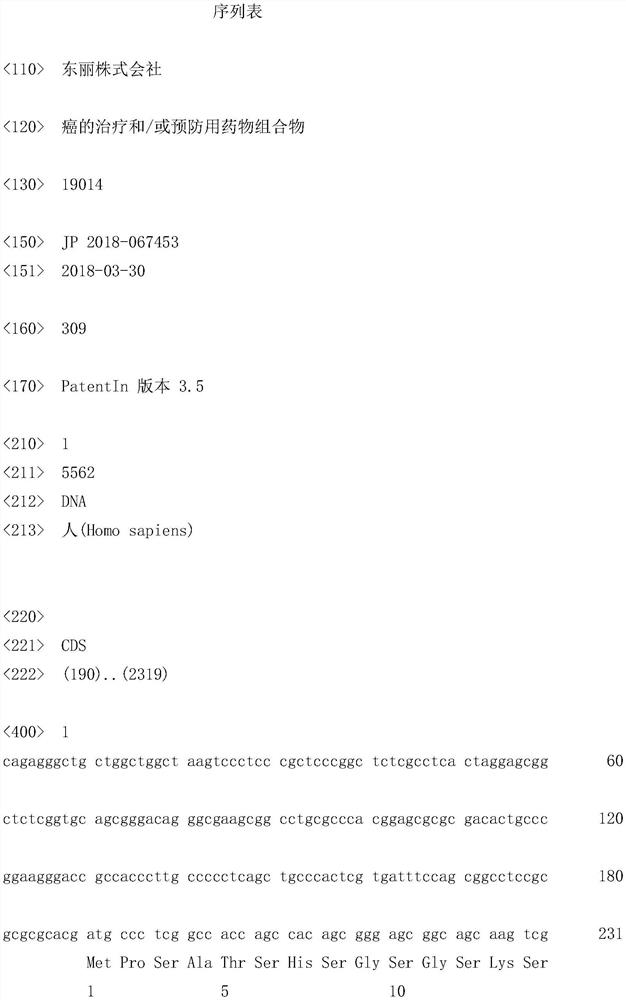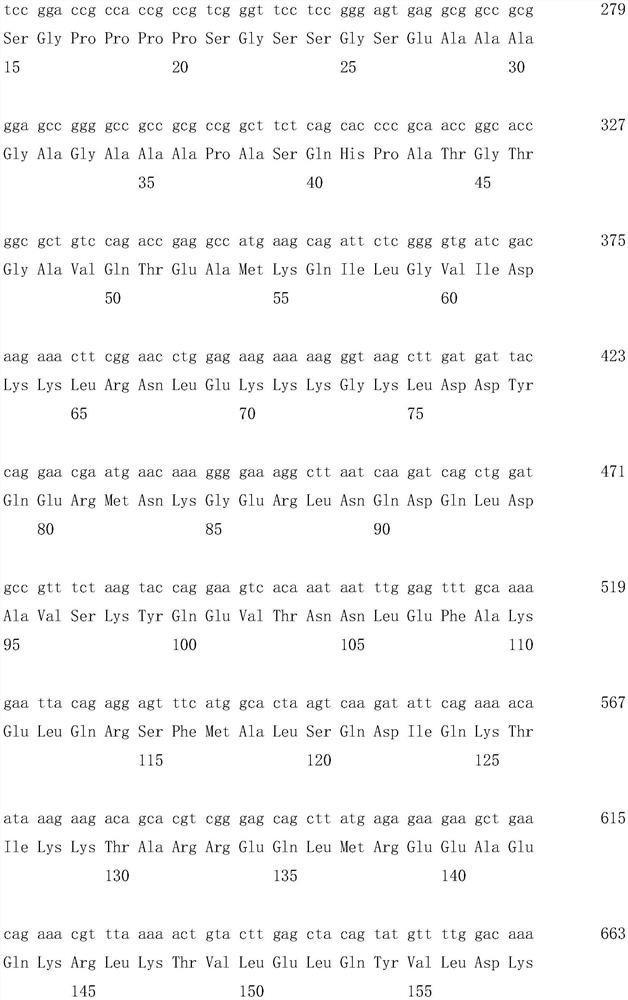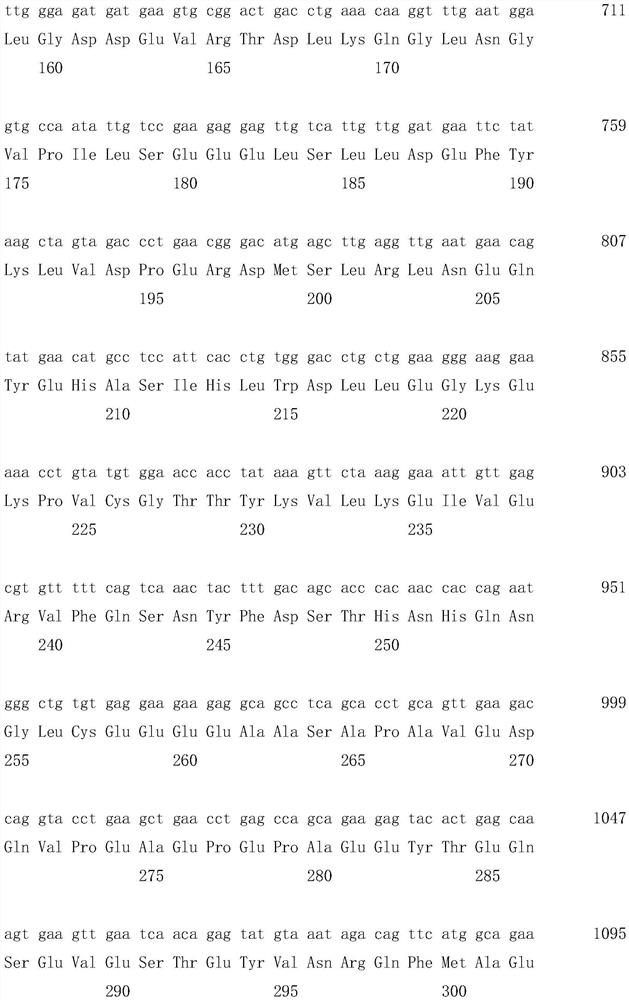Pharmaceutical composition for treatment and/or prevention of cancer
A technology for drugs and serial numbers, which can be used in drug combination, drug delivery, medical preparations containing active ingredients, etc., and can solve the problems of weakened anti-tumor effect of imiquimod
- Summary
- Abstract
- Description
- Claims
- Application Information
AI Technical Summary
Problems solved by technology
Method used
Image
Examples
Embodiment 1
[0195] Example 1 Preparation of Anti-CAPRIN-1 Antibody
[0196] In the present invention, an anti-CAPRIN-1 antibody immunoreactive with CAPRIN-1 protein was used, and the antibody prepared as follows was used.
[0197] (polyclonal antibody)
[0198] Mix 1 mg of human CAPRIN-1 recombinant protein prepared according to Example 3 of WO2010 / 016526 with an equal volume of incomplete Fluorine's adjuvant (IFA) solution, and administer it subcutaneously to rabbits every 2 weeks. with 4 times. Blood is then collected to obtain antiserum containing polyclonal antibodies. This antiserum was further purified using a protein G carrier (manufactured by GE Helus Kea Biosciences Co., Ltd.) and replaced with PBS (-) to obtain a polyclonal antibody against the CAPRIN-1 protein (anti-CAPRIN-1 polyclonal antibody #1).
[0199] (Monoclonal antibodies)
[0200] 100 μg of human CAPRIN-1 recombinant protein prepared according to Example 3 of WO2010 / 016526 was mixed with an equal amount of MPL+TDM...
Embodiment 2
[0207] Example 2 The anti-tumor effect produced by the combined use of anti-CAPRIN-1 antibody and imiquimod
[0208] Next, the anti-CAPRIN-1 antibody prepared in Example 1 (anti-CAPRIN-1 polyclonal antibody #1 and humanized antibody #1) was administered in combination with imiquimod to produce tumor-bearing mice. The antitumor effect was evaluated.
[0209] Specifically, using NOD-SCID mice obtained by subcutaneously transplanting human-derived cancer cells expressing CAPRIN-1 protein, the anti-tumor effect produced by the combined use of anti-CAPRIN-1 antibody and imiquimod in the present invention was studied. Effect. For each mouse, 10 7 Human breast cancer cells BT474 were mixed with Matrigel (SIGMA) and transplanted subcutaneously to grow to a tumor size of about 60mm 3 , so as to produce cancer-bearing mice. BT474 expresses CAPRIN-1 protein on the cell membrane surface, and it was confirmed that the anti-CAPRIN-1 antibody produced in Example 1 reacts with a part of C...
Embodiment 3
[0214] Example 3 Comparison with antitumor effect produced by combined use of anti-CAPRIN-1 antibody and anticancer agent
[0215] Next, the combination of the anti-CAPRIN-1 antibody prepared in Example 1 (anti-CAPRIN-1 polyclonal antibody #1 and humanized antibody #1) and imiquimod was administered to the generated cancer-bearing mouse organisms. The antitumor effect was compared with the tumor effect when the above-mentioned antibody was used in combination with a conventional anticancer agent other than imiquimod.
[0216] Specifically, using NOD-SCID mice obtained by subcutaneously transplanting human-derived cancer cells expressing CAPRIN-1 protein, the anti-tumor effect produced by the combined use of anti-CAPRIN-1 antibody and imiquimod in the present invention was studied. Effect. For each mouse, 10 7 Human breast cancer cell line BT474 is mixed with Matrigel (Matrigel) (SIGMA) to inhibit it subcutaneously, allowing it to grow to a tumor size of about 90mm 3 , so as...
PUM
 Login to View More
Login to View More Abstract
Description
Claims
Application Information
 Login to View More
Login to View More - R&D
- Intellectual Property
- Life Sciences
- Materials
- Tech Scout
- Unparalleled Data Quality
- Higher Quality Content
- 60% Fewer Hallucinations
Browse by: Latest US Patents, China's latest patents, Technical Efficacy Thesaurus, Application Domain, Technology Topic, Popular Technical Reports.
© 2025 PatSnap. All rights reserved.Legal|Privacy policy|Modern Slavery Act Transparency Statement|Sitemap|About US| Contact US: help@patsnap.com



